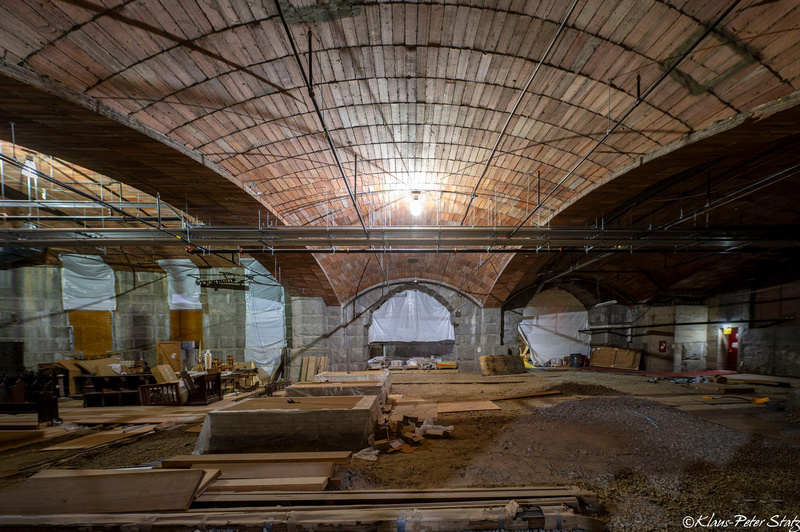The original 1911 Penn Station building designed by McKim, Mead, and White was torn down in 1963, but remnants of the structure still pop up all over New York and in places as far as Kansas City, from an LIRR parking lot to a New Jersey botanical garden. As the building was being torn down, preservationists and architectural salvagers saved the stone eagles that ringed the cornice, sculptures by Adolph A. Weinman, and other fragments. Pieces of infrastructure from the original building are still part of the station we use today. Deep below the historic Cathedral of St. John the Divine, inside the crypt, you’ll find another set of remnants from the former train station.
In the crypt of the cathedral, beneath vaulted Guastavino tile ceilings, you will find among the many items in storage six bronze torchiers from the original Penn Station. According to a 1999 article in The New York Times, these torchiers once lit the general waiting room of the station. Destined for the landfill, the torchiers were purchased by the Cathedral during demolition in the early 1960s.
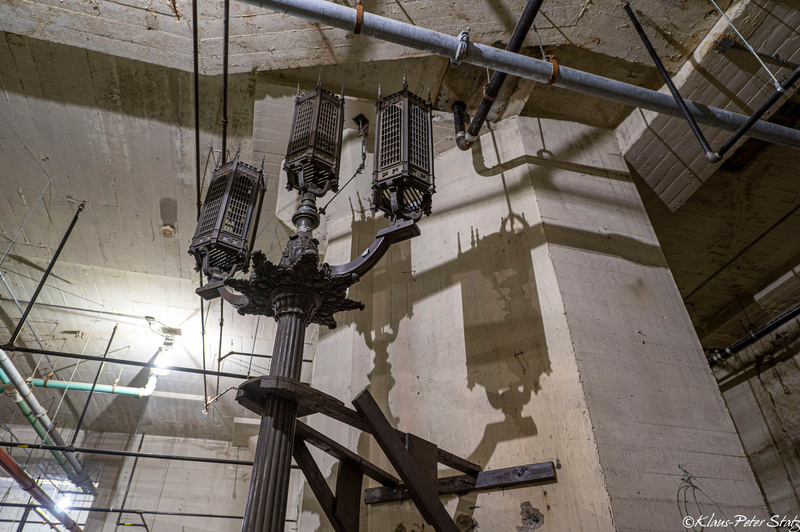
Comparing photos of the torchiers now to photos of them in the station, you’ll notice some differences. The torchiers were originally topped with eight globe lights and stood on tall stone bases within the grand waiting room which had a classical Roman design. To better fit the Gothic aesthetic of the Cathedral, the heads were changed and pared down to just three lights. Instead of globes, they are now topped with hexagonal lanterns adorned with tiny spires.
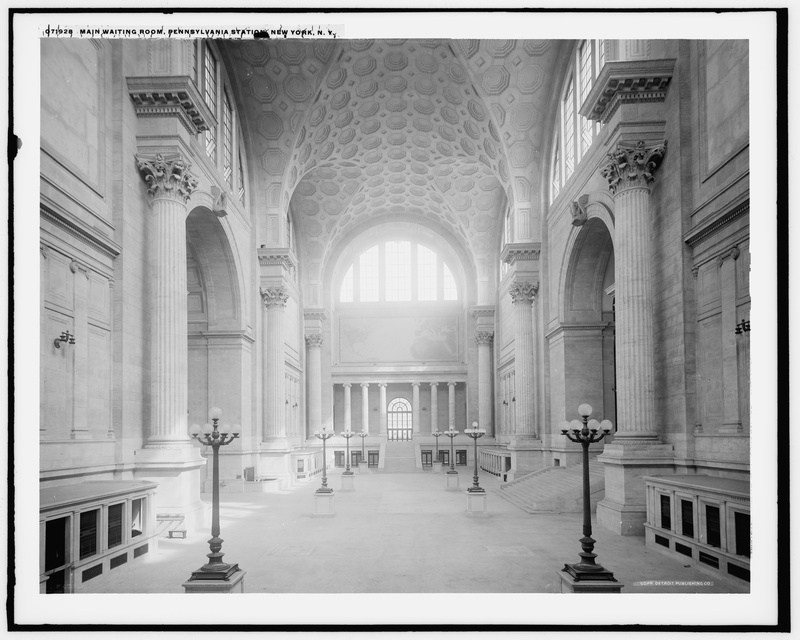
The torchiers were installed at the entrance to the Cathedral on Amsterdam Avenue at 112th Street in 1967 or 1968. Unfortunately, the outdoor elements proved too strong for the historic pieces, which were intended for indoor use. In 1989, strong winds from a nor’easter toppled one of the torchiers. The remaining five were soon deemed unsafe due to corrosion of their supporting lead bases. Since the torchiers couldn’t hold up against the forces of weather, all six were eventually moved into storage in the crypt for safekeeping.
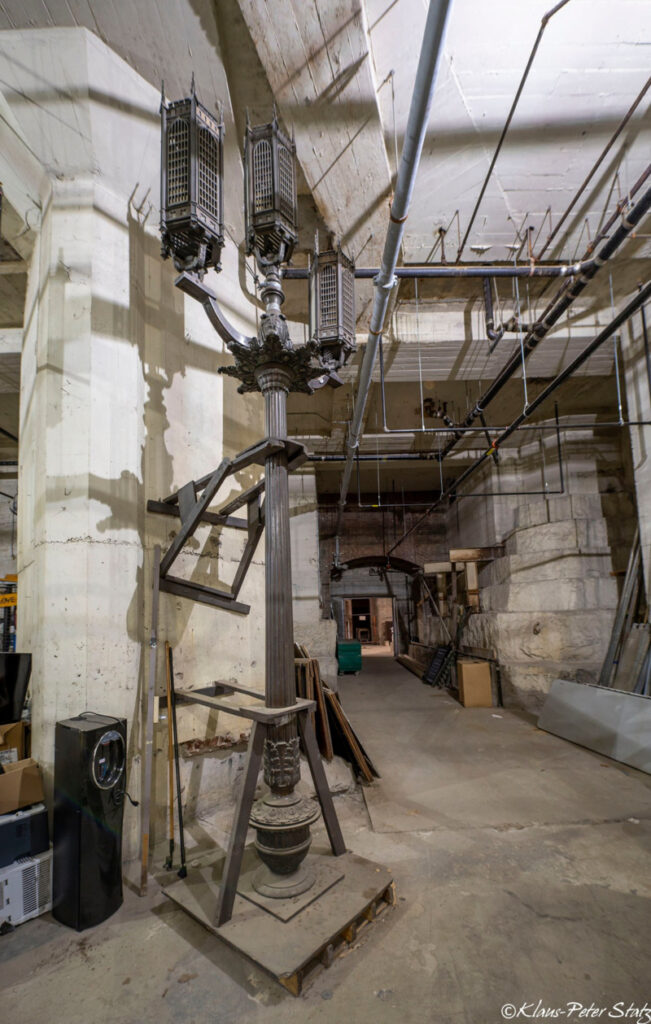
Construction on the Cathedral of St. John the Divine began in 1892 and the first step was to dig into the ground to build the foundation. Before the chapels above ground were completed, church services were held in the underground crypt. This went on from 1899 until 1911 when the Chapel of St. Columbia, the Great Choir, and the Crossing were completed. To this day, the Cathedral remains unfinished.
The crypt is a vast space that runs the entire length of the Cathedral. Renovation of the space began in 2018 and many items once forgotten below ground were brought up into the light in an exhibit called Treasures from the Crypt, currently on view. The crypt houses the tombs of former bishops and deans, rooms that have been used as artist studios, offies, and tons and tons of storage space.
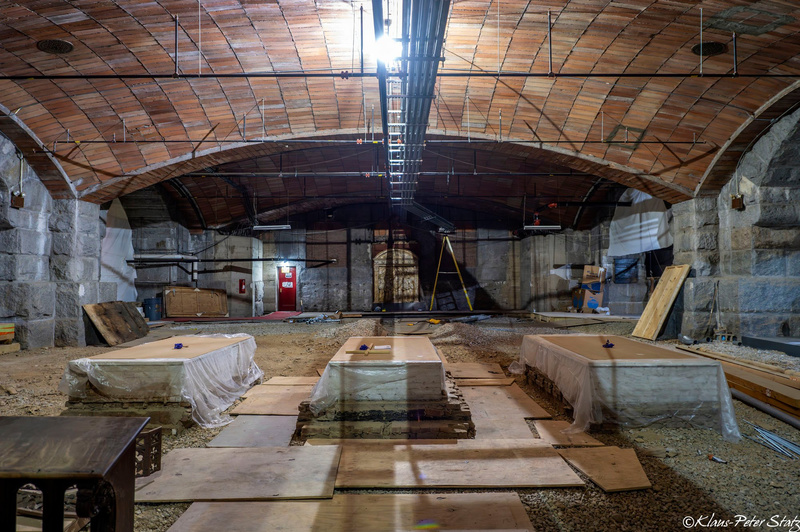
Representatives from St. John the Divine say that various Cathedral organizations and leaders have considered reinstalling the lamps on the front steps of the Cathedral but the necessary funding has not been realized yet. Still, the dream of their restoration lives on!
Next, check out 10 Secrets of the Cathedral of St. John the Divine






